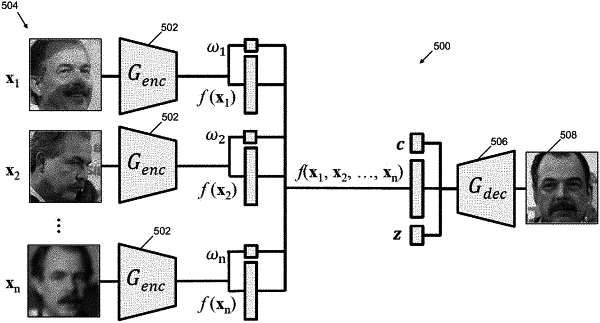| CPC G06V 40/172 (2022.01) [G06F 18/214 (2023.01); G06N 20/00 (2019.01); G06V 10/242 (2022.01); G06V 40/165 (2022.01); G06V 40/168 (2022.01)] | 28 Claims |

|
1. A method for identifying a subject using imaging, the method comprising:
receiving an image depicting a subject to be identified;
applying a trained Generative Adversarial Network (GAN) to the image to generate an identity representation of the subject, wherein the GAN comprises a discriminator and a generator, the generator including at least one encoder and a decoder;
wherein generating the identity representation of the subject includes weighing features associated with each of a plurality of images for the subject using learning coefficients, the identity representation being disentangled from pose variations;
generating at least one synthetic image based on the identity representation, the at least one synthetic image including a rotated pose of the subject, the rotated pose of the subject in the at least one synthetic image being different from a pose of the subject in the image;
identifying the subject using the identity representation; and
generating a report indicative of the subject identified.
|